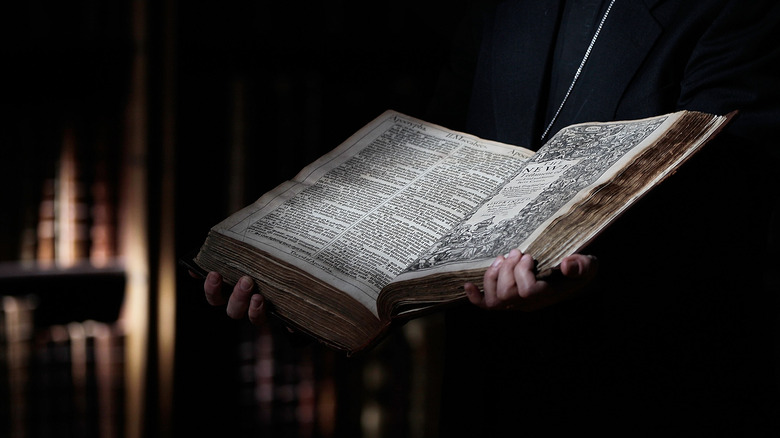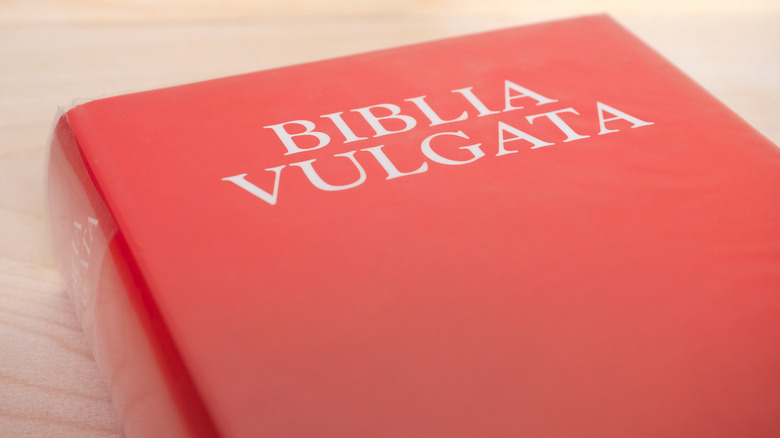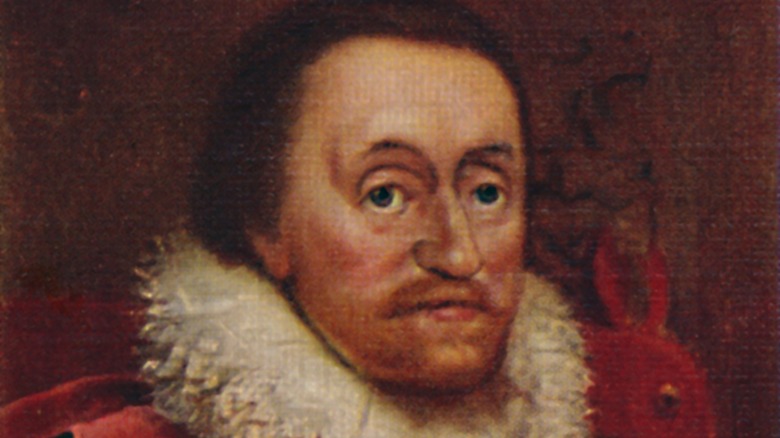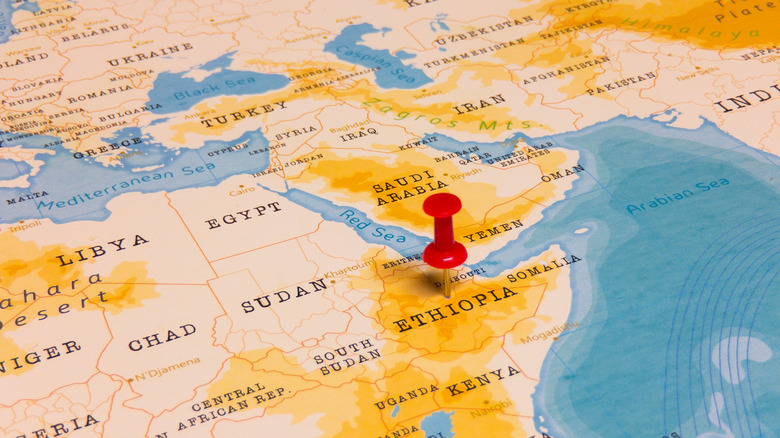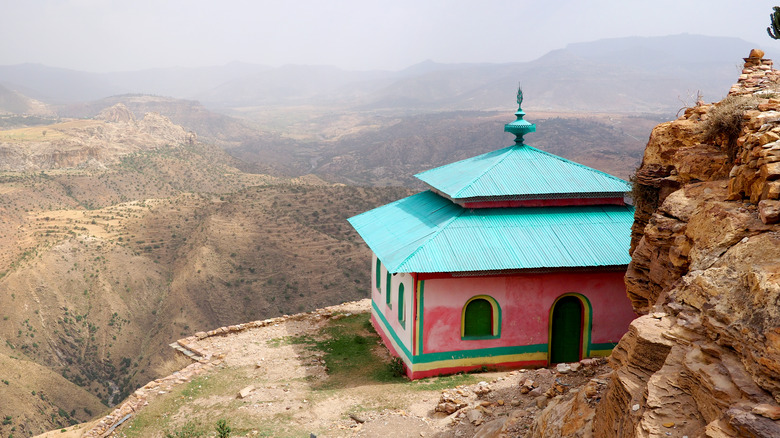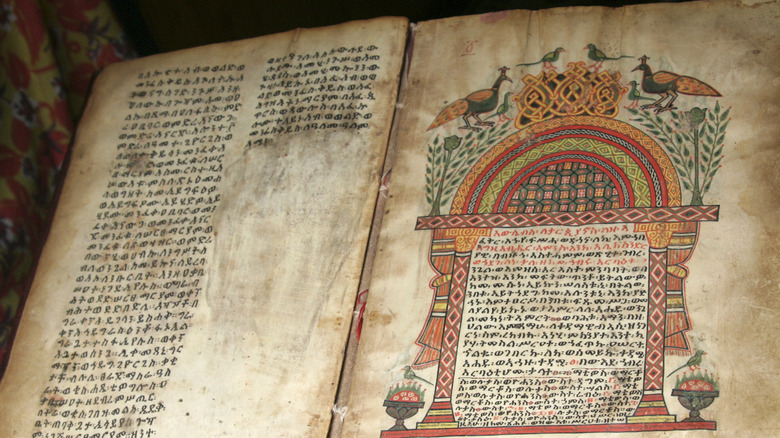The King James Bible And The Ethiopian Bible: What's The Difference?
When it comes to Bibles, the King James Bible may be the most popular of all modern versions. Before the King James Bible, there were several versions of different sections of the Bible, but the first complete translation was the John Wycliffe Bible, which was translated into English from Latin in the 14th century. Other Bible translations included the Tyndale Bible, which was translated from the Greek and Hebrew texts. The Coverdale Bible, translated in 1535, was the first complete Bible in modern English. In 1539, the Great Bible was the first Bible sanctioned by the British Crown, according to Christian Apologetics and Research Ministry (CARM).
Other English translations included the Geneva Bible, which was the first English Bible approved by a committee, and it was the first to contain verse numbers. The Bishop's Bible was the second Bible authorized by England in 1568. The books in these translations were based on the books included in the Latin version of the Bible, called the Vulgate, which is considered to be the first worldwide edition of the Bible.
The first Bible was assembled in around A.D. 400
St. Jerome assembled the Vulgate around A.D. 400 according to Learn Religions. It contained 39 books in the Old Testament, which was then known as the Hebrew Bible, and 27 books known as the New Testament. Many books about the life and teaching of Jesus were written in the first century, and many were not authentic. This became a matter of concern for early Christian church leaders. They gathered at the Council of Nicea in A.D. 325 and again in A.D. 381 at the First Council of Constantinople to decide which books would go into the New Testament. They determined that a book would be considered "scripture" if it was written by one of Jesus' disciples, or someone who was a witness to his ministry. The book also had to be written in the first century, and it had to be consistent with the other parts of the Bible.
The Vulgate was used for more almost 1,500 years (via Aleteia). While what we have come to know as the Holy Bible has undergone a myriad of changes, the most significant change possibly occurred under the rule of King James I.
King James I authorized a new translation
King James I was concerned about inconsistencies with the different Bible translations circulating in the 17th century, according to Britannica. Several clergymen also asked the king for a revision, claiming that some of the translations floating around were corrupt. The king wanted a version of the Bible that settled "religious differences," as well as one that reinforced his power, per History.
To do this, he arranged 47 scholars to revise the multitude of existing biblical translations. Divided into six groups, they worked separately on different sections for a whopping seven years. Britannica reports that these men had to follow strict rules to avoid interjecting any bias, and they used a variety of tools to help them create a scholarly Bible that was faithful to its original languages. In 1611, the King James Bible was published, and because of advancements made in printing, it became one of the most accessible Bible versions to date.
The oldest Bible is an Ethiopian Bible
Among the many translations of the Bible, experts believe that the oldest original copy was discovered in Ethiopia, according to Orthodox Christian. According to Aleteia, it is not clear exactly when the Ethiopian Bible was first discovered, but it was mentioned in a book written by historian Beatrice Playne in 1950.
The Ethiopian Bible is often referred to as the Garima Gospels: named for the monk who reportedly wrote the book after he arrived in Ethiopia from Constantinople sometime around A.D. 494. This Bible contains three manuscripts in two volumes, both of which are about 10 inches thick, reports the Independent. The two books are named Garima 1 and Garima 2 and the first tome's cover is made from copper while Garima 2's is made from silver (via Africa Global News). The Ethiopian Heritage Fund explains that each volume contains about 400 pages. Written on goatskin in the language of Ge'ez, carbon dating reveals that the manuscript appears to be from sometime between A.D. 330 to 650 AD.
The Ethiopian Bible is tucked away in a monastery
Unlike the Hebrew Bible, the Vulgate, or the King James Bible, there is only one copy of the Ethiopian Bible, and it stays locked away in a monastery that sits on the edge of a mountainside some 7,000 feet high in the Tigrai Highlands (per the Independent). The fact that it is still around is astounding since Ethiopia has endured attacks from Muslims, Italians, and a fire that destroyed the monastery's church, as Orthodox Christian Laity notes.
In 2010, the Bible was restored by the Ethiopian Heritage Fund, which has worked to restore many other artifacts in Ethiopia. Bookbinder Lester Capon spent three weeks at the monastery working to restore the binding and clean some of the pages. The Independent reports that he had to work outside with only the equipment he could carry with him because the monks would not let the Bible out of their site.
The Ethiopian Bible differs from the King James Bible in many ways
The Ethiopian Bible and the King James Bible are different manuscripts. The Ethiopian Bible has 84 books compared to the 66 in the King James Bible. The Ethiopian Bible only contains four of the Gospels of the New Testament and also contains books that were not included the King James Bible. These include the Book of Enoch, Esdras, Baruch, and the three books of Maccabee, according to Orthodox Christian Laity.
The Ethiopian Bible is also vibrantly illustrated. Some of the pages are filled with drawings depicting the saints, apostles, a temple, and even charts that were used to help readers cross-reference certain passages, per the Marginalia. Surprisingly, the colors on the pages are still rich. Experts believe this is due to the fact that the book has been housed in a monastery that rarely saw the light of day where it remains today (via Orthodox Christian Laity).
